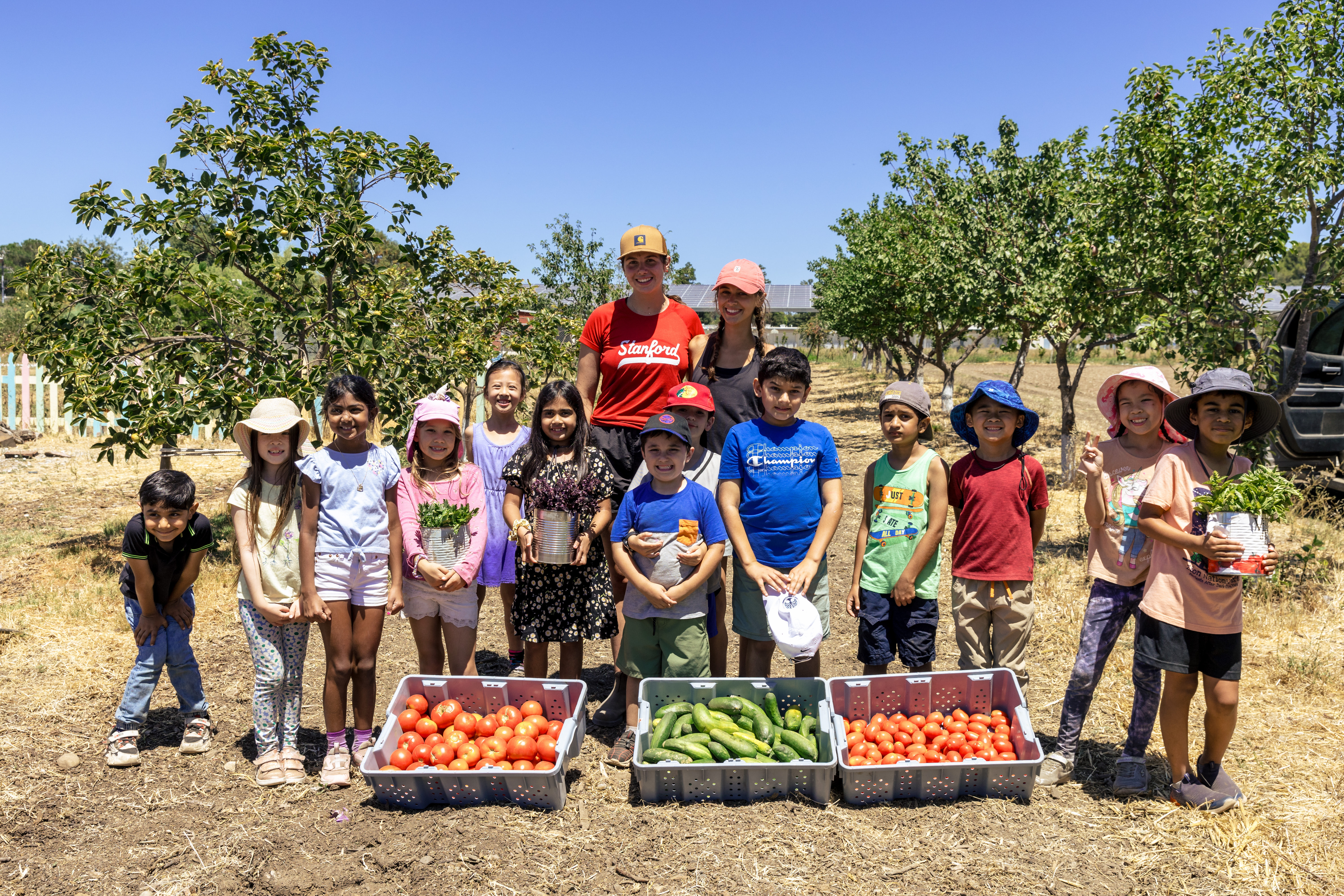One hot summer day on an 11-acre farm in Sunnyvale, a group of elementary school students trailed happily into a cool enclosure covered in vines and leaves and sat in a circle on wooden blocks.
Stanford undergraduate Kathryn “Kat” Alexander, ’26, read them a story and then asked them what they did with the kale and carrots they received the day before.
“I ate the carrot before I left. I liked it,” a boy said as a red tractor chugged through a nearby field. “I put the kale on tacos,” he added.
“I put the kale in my dad’s famous soup,” a girl said. Another said they added it to their ravioli.
“I didn’t do anything yet,” another child replied.
“‘Yet’ is a really good word,” Alexander told the group. “So, what are your plans for how you will use the kale?”
Alexander and Izzy Preble, ’26, are Stanford Human Biology Research Exploration (HB-REX) interns who served as camp counselors and researchers at Farm to Table Camp this summer. There, they led intervention studies on how to get kids to eat more vegetables while showing them where their food comes from. For 14 years, Stanford’s Nutrition Studies Research Group has partnered with the Santa Clara Unified School District to host the camp at the school’s farm.
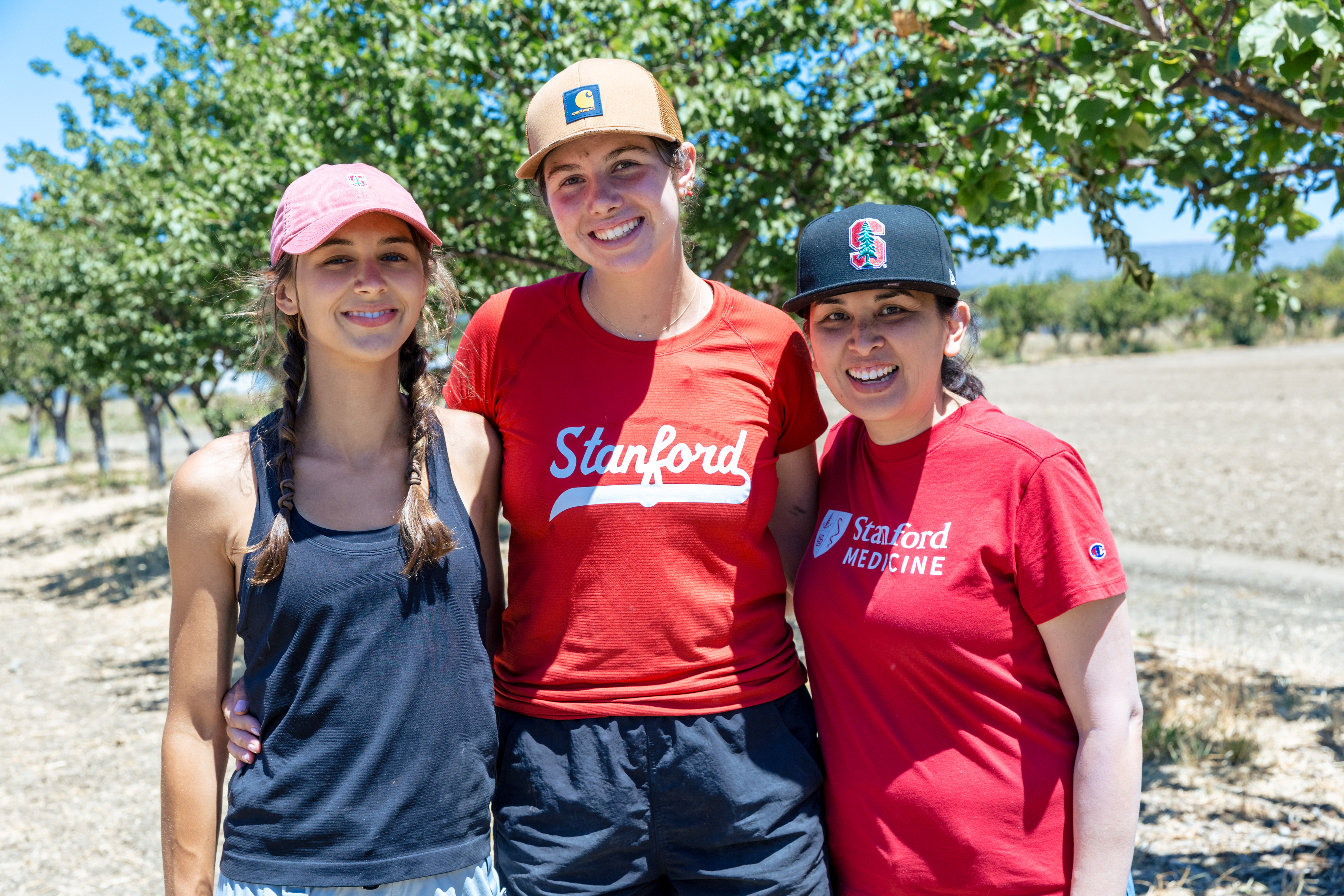
Stanford Human Biology Research Exploration interns Izzy Preble and Kathryn “Kat” Alexander with Linda Koh, a public health nurse and postdoctoral research scholar in the Stanford Prevention Research Center while at the Farm to Table Camp. | Shelley Anderson/Cage and Aquarium
“Izzy and I have been super excited about the growth mindset – the idea that you might not like something yet, and having kids try new vegetables for the first time,” Alexander said. “On the first day, some parents said their kids wouldn’t try a single vegetable, and then when we tell them what they tried here, they’re almost in tears, they are so excited. It’s been such a rewarding part of this process.”
To foster children’s connection to where their food comes from, Alexander and Preble created storytelling intervention and narrative-building activities that bring the food system to life as “veggie superheroes” with “seasoning sidekicks.”
They also draw on a lecture they heard from their mentor, Christopher Gardner, director of the Nutrition Studies Research Group, the Rehnborg Farquhar Professor, and a professor of medicine, who emphasized that science is nothing without good communication. “We wanted to challenge ourselves to be good communicators not only in how we report and publish this research but also to the kids, and empower them with the scientific knowledge to talk about why veggies are important,” Alexander said.
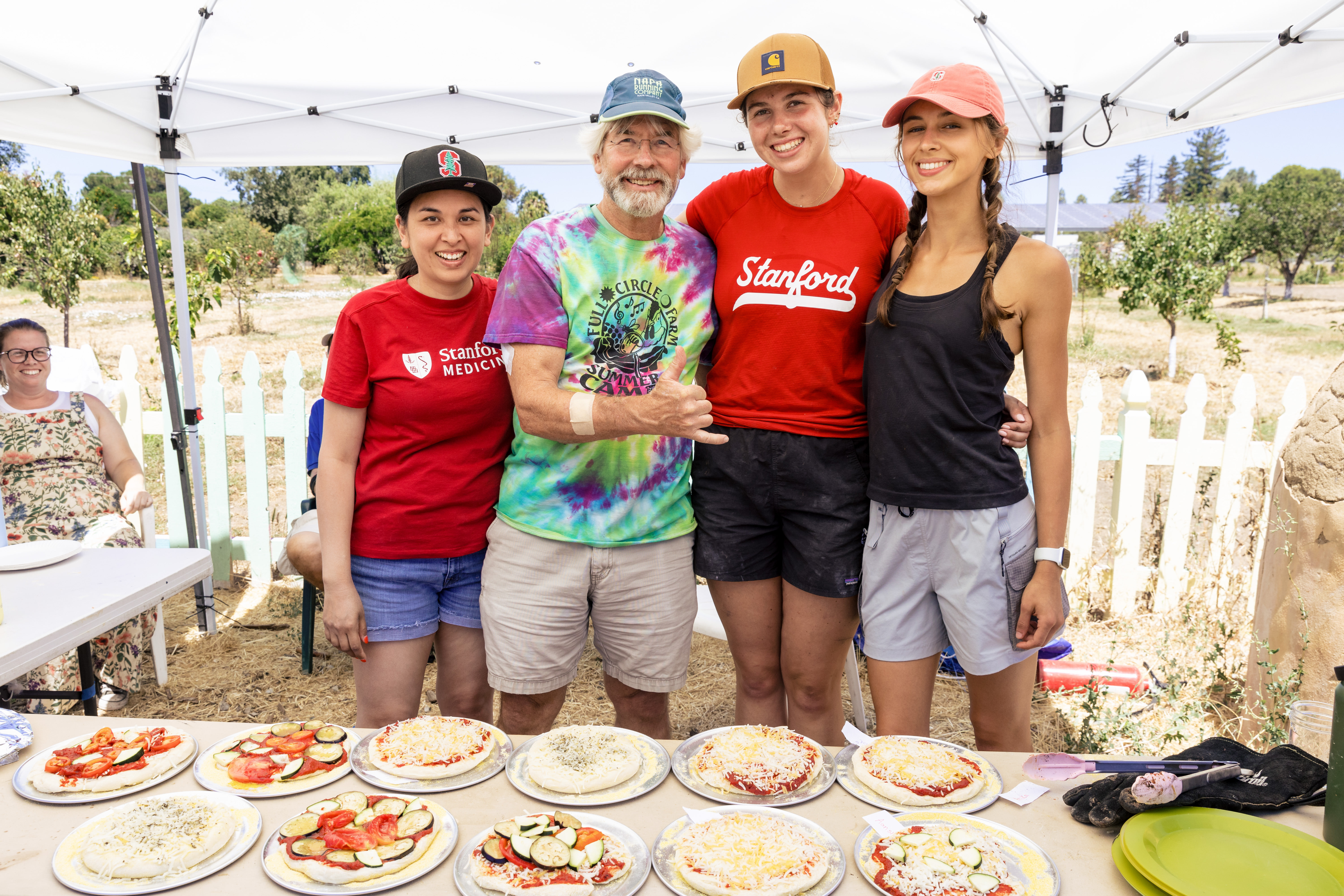
Stanford’s Linda Koh, Christopher Gardner, Kathryn “Kat” Alexander, and Izzy Preble survey pizzas waiting to go into the oven at Farm to Table Camp. | Shelley Anderson/Cage and Aquarium
“This is a super unique opportunity, not only to conduct hands-on work on a farm but also be able to design our own research project and learn about the research process, methods, and data,” Preble said. “It's been really awesome.”
Beets and berries
Gardner first learned of the school district’s farm at the 2010 Stanford Food Summit, an event that brings Stanford researchers together to collaborate in creating a more healthy and sustainable world. Hopeful that the farm could provide research opportunities, Gardner jumped at a request to help SCUSD strengthen its summer camp program.
Gardner had never run a camp before, but quickly drew on Stanford resources by involving students from the HB-REX summer internship program and the Graduate School of Education, as well as the Haas Center for Public Service, which provided student grants. A group of students from the School of Earth, Energy, and Environmental Sciences, now part of the Stanford Doerr School of Sustainability, designed the camp curriculum for their senior thesis project.
The camp has grown each year since, serving more children and generating more involvement from Stanford students and faculty across disciplines who are interested in tackling the challenge of getting children to eat more healthily.
Exposure and engagement are key to getting kids to eat more fruits and vegetables, Gardner said, which are lifelong habits that can help reduce and prevent chronic diseases. Students’ research at the camp found that the more children are involved with the process of growing or cooking vegetables, the more likely they are to eat them. Hearing that their peers have tried foods will also make children more likely to try them, Gardner said.
Digging down
Three week-long camps are offered to kindergarten to third grade students, and one week-long camp is offered to fourth through eighth grade students. Approximately 25 students attend each camp. There, kids learn the science behind where their food comes from – such as through examining worms or water droplets through a magnifying glass – and get hands-on cooking experience at the farm, which has several fields, orchards, garden beds, and an outdoor pizza oven. Older students are challenged with more complicated farm chores and recipes.
Each week at camp ends with a Friday celebration during which families join campers for handmade pizza packed with vegetables grown and prepared by the campers.
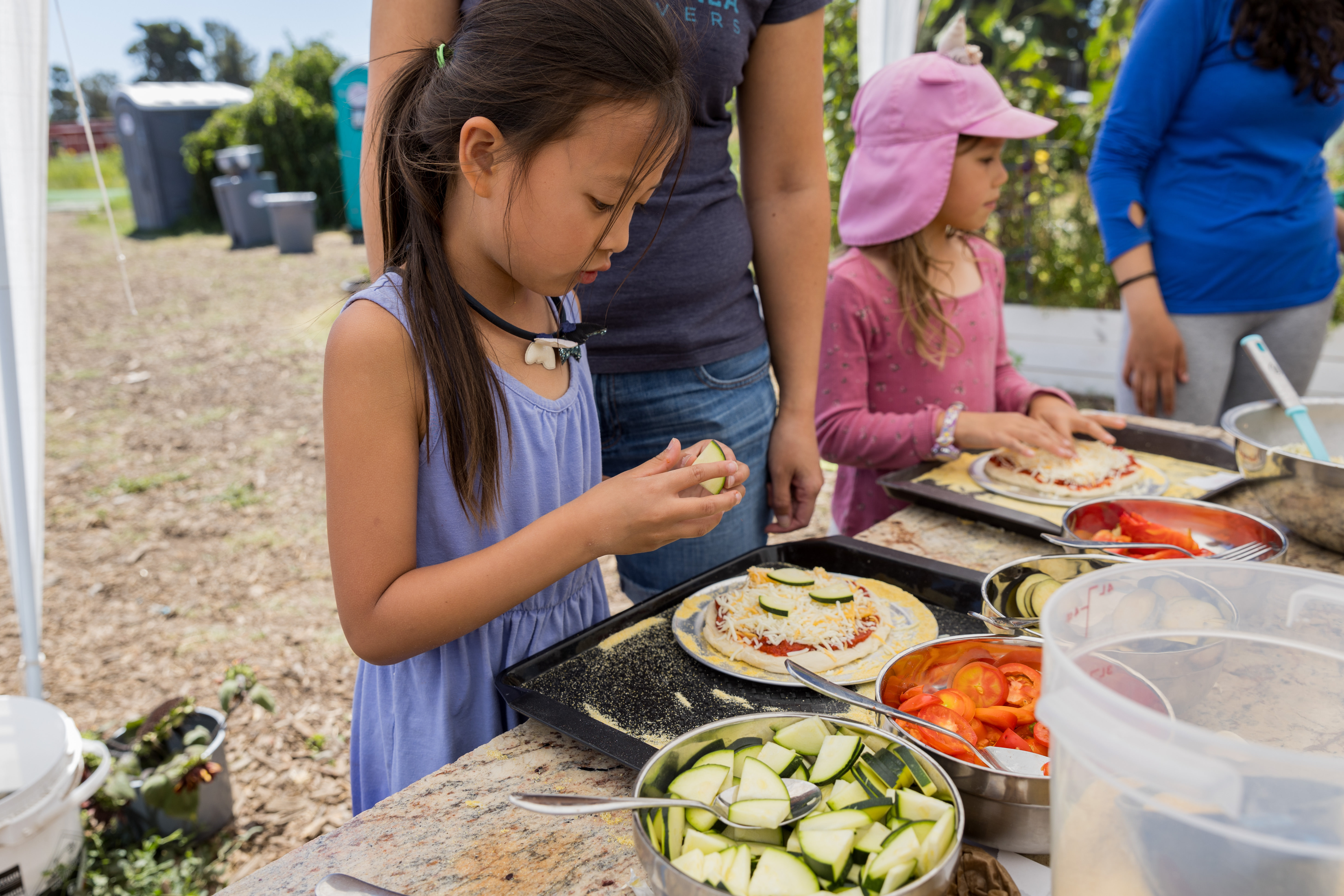
Scarlett creates her own pizza on the last day of Farm to Table Camp during which families join campers for handmade pizza topped with vegetables grown and prepared by the campers. | Shelley Anderson/Cage and Aquarium
“Kids learn in different styles. Some kids are totally fine hearing it from a book but we also know that kids learn better from hands-on experience,” said Natacha Costa, the farm’s site supervisor who oversees Farm to Table Camp. “It’s a fun camp. We teach them not only farming and where the food comes from but also how we take all the food we harvest here and turn that into easy recipes they’ll enjoy.”
Nico Estrada, 7, has attended the camp for several years now. “I like camp because I get to try new things. I’ve tried plums, they’re pretty good,” he said. “I like it because I can try it, and if I like it, I can eat it more.”
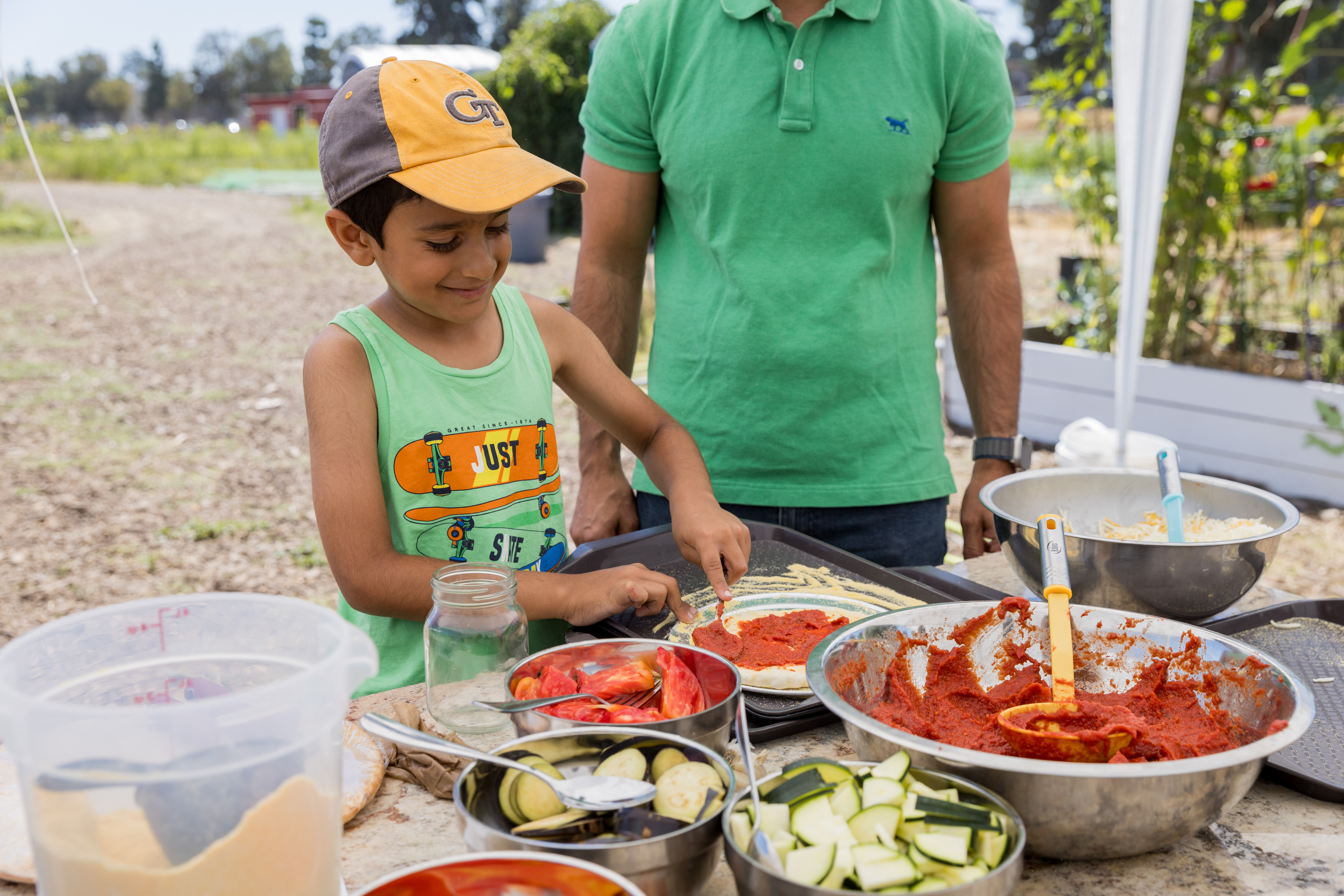
Kai prepares pizza with farm-grown vegetables for the family gathering on the last day of Farm to Table Camp. | Shelley Anderson/Cage and Aquarium
SCUSD Assistant Superintendent Kathie Kanavel said the camp fits in perfectly with the district’s ongoing environmental literacy and sustainability efforts. The district uses the farm for educational tours throughout the year, and several departments, such as early learning and after-school programs, coexist on the farm. The food harvested from the farm is used in the district’s cafeterias or sold at its community farmstand each week, and the district employs its own farmer.
Data generated by the Farm to Table Camp researchers is shared with the district, which uses it to inform how it can further support children eating more fruits and vegetables – whether in the classroom or its after-school programs.
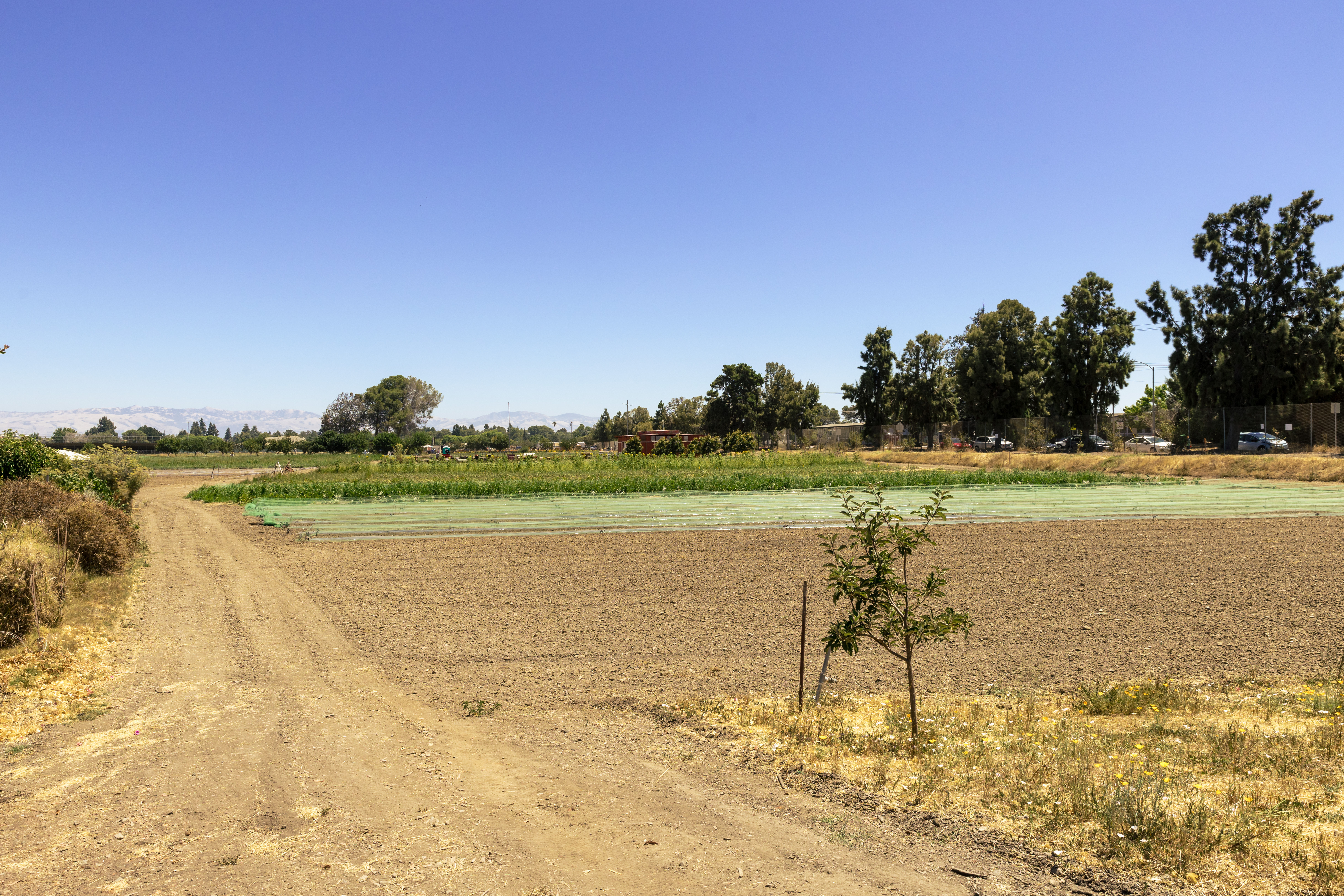
Santa Clara Unified School District’s 11-acre farm in Sunnyvale features several fields, orchards, garden beds, and an outdoor pizza oven. | Shelley Anderson/Cage and Aquarium
“Bringing research into our programs has been a value of ours for a long time,” Kanavel said. “We take the expertise of our educators and marry that with Stanford’s research in environmental science and sustainability to enhance the learning that can happen.”
Lifelong habits
After the campers shared about how they used their kale and carrots, counselors handed out rosemary, cilantro, and basil, which the kids excitedly clutched as they walked out of the enclosure, packed up, and headed home.
Going forward, the camp’s organizers hope it can serve more children and become a model for other districts.
Linda Koh, a public health nurse and postdoctoral research scholar in the Stanford Prevention Research Center, has supported the camp for several years by applying for grants to expand its work. She obtained a $100,000 grant from the Ardmore Institute of Health last year, and some of that funding will be used to install a greenhouse at the farm, develop camp curriculum, and provide training for camp counselors and researchers.
Koh says the camp is a great way to help kids develop healthy habits when they’re likely to stick. “If we can meet them early on, and teach them about the importance of good nutrition and simple and easy ways to incorporate it into their diet, they’ll have the benefit for their lifetime.”
Writer
Chelcey Adami
